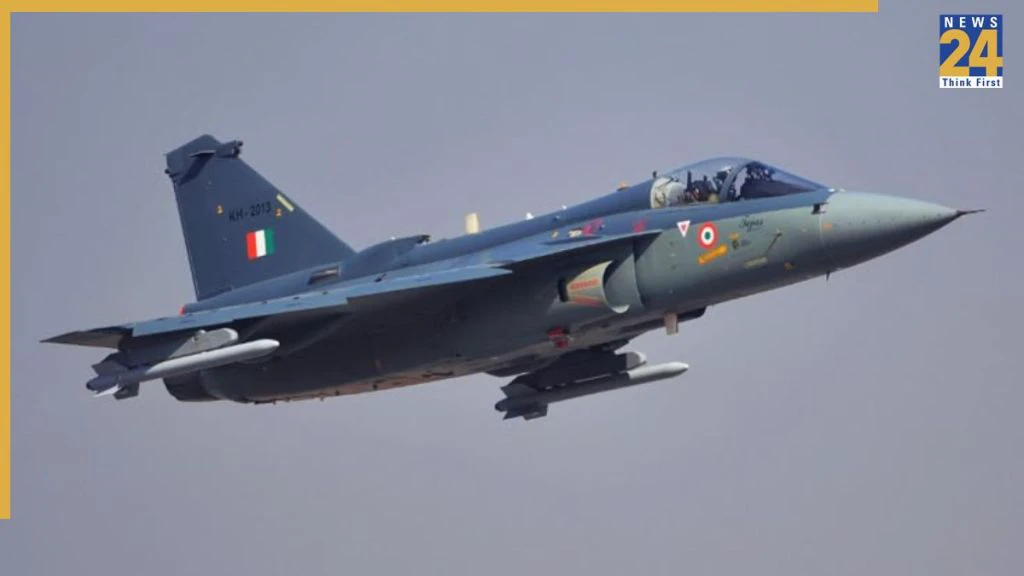Friday, 21st November, afternoon at the Dubai Airshow should have been India’s moment of pride. Instead, it became a tragedy that left us with heavy hearts and difficult questions.
Wing Commander Namansh Syal, a highly skilled fighter pilot, lost his life when his Tejas Mark-1 fighter jet crashed during an aerobatic display at Al Maktoum International Airport. The jet, performing what was meant to be a spectacular eight-minute show, suddenly plunged to the ground around 2:10 pm and exploded in a massive fireball. The pilot couldn’t eject in time. Just like that, a life dedicated to serving the nation was gone, and India’s ambitious dream of becoming a global fighter jet exporter took a serious blow.
The Tejas has been flying with the Indian Air Force for ten years now, and until this horrible accident, it had an almost spotless safety record. Since the first squadron was formed in 2016, there had been only one other crash-near Jaisalmer last year-where thankfully, the pilot managed to eject safely. This makes the Dubai incident even more shocking. Wing Commander Syal wasn’t a novice. He was an experienced fighter pilot who had been chosen to showcase India’s indigenous aircraft to the world. Yet something went terribly wrong during what pilots call a negative G-turn, and he paid the ultimate price.
So what exactly happened up there? While the official court of inquiry will take months to reach a conclusion, the available evidence points to a deadly combination of factors that came together at the worst possible moment. The Tejas was performing a low-altitude manoeuvre that involved negative G forces-this is when the aircraft nose-dives sharply and the forces push opposite to gravity. Imagine being in a lift that suddenly plunges downward, and you feel your stomach rise. Now multiply that sensation many times over, add the complexity of controlling a supersonic fighter jet, and you begin to understand what pilots face during such stunts.
Negative G manoeuvres are particularly tricky because they can disorient even the most experienced pilots. Your brain, which is used to normal gravity, suddenly gets confused about which way is up and which is down. This is called spatial disorientation, and it’s one of the most dangerous things that can happen to a pilot. Add to this the fact that negative G forces can make instruments behave unpredictably and can even disrupt the airflow into the jet’s engine intakes. When you’re flying just a few hundred feet above the ground, performing an aggressive stunt, and suddenly your engine hiccups or your controls don’t respond the way they should-you have perhaps two or three seconds to fix everything. That’s not enough time for the human brain to process what’s happening, let alone correct it.
There’s another possibility that veteran pilots have mentioned-a sudden loss of power or engine disturbance. The Tejas uses a GE-F404 engine from the United States, which is generally reliable. But during aggressive manoeuvres, especially when the aircraft is inverted or diving, the engine can experience something called a compressor stall. This is when the airflow through the engine gets disrupted momentarily, causing a brief loss of thrust exactly when the pilot needs maximum power to pull out of the dive. At high altitude, a compressor stall is manageable-you have time and space to recover. At low altitude, during a display? It’s a death sentence.
What makes this tragedy even more heartbreaking is that modern fighter jets like the Tejas are equipped with zero-zero ejection seats. These are designed to work even at zero altitude and zero speed, theoretically allowing pilots to eject safely even during takeoff or landing. But ejection isn’t instant-it takes about two seconds from the moment the pilot pulls the handle to when the parachute fully deploys. If you’re diving towards the ground at several hundred kilometres per hour and you’re already below 100 feet when you realize you’re in trouble, even zero-zero seats cannot save you. Wing Commander Syal probably realized too late that his jet wasn’t going to recover, and by then, physics had sealed his fate.
The Indian Air Force has ordered only 38 Tejas Mark-1 fighters so far out of 40 originally planned, and they’ve placed orders for 180 improved Mark-1A jets worth over one lakh crore rupees. But delays in engine supplies from America and pending weapons trials mean the force hasn’t received any of the newer aircraft yet. This crash will inevitably raise questions about the Tejas programme, about whether we’re pushing our pilots and our aircraft too hard to prove a point on the international stage.
But here’s what we shouldn’t forget: every aircraft that ever flew, every technology that ever advanced, came with risks and sometimes with terrible costs. The Americans lost pilots testing their F-16s. The French lost pilots flying their Mirages. The Russians have had countless accidents with their MiGs and Sukhois. Flying supersonic jets at low altitude while performing aerobatics is inherently dangerous, no matter which country built the aircraft. What matters now is whether we learn from this tragedy, whether the investigation is thorough and honest, and whether Wing Commander Syal’s sacrifice leads to improvements that save future lives.
India lost a brave son in Dubai. The Tejas programme suffered a setback. But giving up isn’t an option. We owe it to Wing Commander Namansh Syal to make our indigenous fighters better, safer, and worthy of the pilots who risk everything to fly them.
